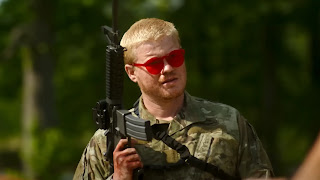The current political landscape has changed how people interact with political and societal issues. Many have become outspoken to defend the side they choose. However, many have remained apolitical. During the Trump Presidency, many voices were heard, “free speech” was interpreted differently, and journalists fought for the truth. And are continuing to do so in an industry that has been deconstructed, almost causing it to crumble. During any time of social injustice, war, genocide or human rights violations, journalists have been present to document all these situations. Without them, no one throughout history would be able to piece together those actual events. Whether they were setting pen to paper, recording or taking photographs, journalists from all walks of life captured the intensity and brutality of what civilians were living through. To this day, those images and articles have remained a source of honesty in a time when things can be heavily manipulated because of technology.
In Alex Garland’s Civil War, he places his photojournalists on a trek through America during a civil war in hopes they can interview the President. People may claim it is overly simplistic, but the way Garland visually depicts the journey of these photojournalists and how they put their lives on the line to deliver the truth while being in the heart of destruction is brutal. Like any Civil War, there are two sides of the same coin, causing division based on a difference in ideology. Garland doesn’t elaborate on what either side is fighting for, but in the end, does it even matter if innocent lives are lost in the crossfire? The focus is not on what or who is causing the division, but instead, it’s an exploration of chaos and turmoil while truth-seeking journalists witness the downfall of society. War journalists Lee (Kirsten Dunst) and Joel (Wagner Moura) are seasoned reporters, and now, the closer they get to the President on their journey, the more terrifying the scenes will become. There are pockets in this dystopian future America that show the anger and hatred towards other Americans. Everyone is armed and apprehensive of whoever drives past them. Even for journalists, the “Press” label on their trucks doesn’t keep them safe.
When Lee meets Jessie (Cailee Spaeny) out in the field, she sees a lot of herself when she first started in photojournalism. Like Lee, Jessie wants to become a war photographer as well. Without thinking about her age, Joel recruits Jessie and brings her along. Lee teaches Jessie how to internalize the horrors she sees in the field. Lee has been part of many traumatic moments throughout history and is still shaken by everything she has seen. We see a seasoned approach to the profession and how each photo Lee has taken has broken a piece of her spirit. Jessie is still young and eager to get the perfect shot without knowing how any of it will emotionally affect her. Their relationship blossoms in the film based on what they learn from each other. It all leads to a defining moment in the third act that shows how much of an impact journalists make in society and each other’s lives. Dunst and Spaeny gave incredible performances as they complimented each other throughout. Dunst delivered a devastating internal performance, while Spaeny’s naïveté garnered a brilliant emotional portrayal of a young journalist witnessing the horrors for the first time.
Garland’s choices in the film depicted the importance of a single photograph. He created a level of intensity for each moment that Lee or Jessie would gear up to take the shot. The first time we see Lee out in the field, it is a very layered scenario with people screaming, soldiers in full gear about to attack and absolute chaos surrounding them. The sound design is the most important aspect here as we get lost in the pandemonium with Lee. Yet Garland’s direction is so precise in where he wants his viewers to look that he subverts expectations. The editing by Jake Roberts is impactful because of the freeze frames incorporated during scenes. Whether it’s a photo by Jessie in black and white or from Lee, the pictures capture a moment that can be interpreted differently out of context for years to come. Audiences will get that duality while watching. So, it offers a different perspective. There is tension in every scene where they encounter a different group of Americans because anything can happen. Whether they’re walking through a warzone or driving down the road, something is around every corner.
Civil War depicts the horrors and uncertainty of a nation divided through the perspective of photojournalists. The pacing is steady and builds up to a final standoff at the White House that is executed perfectly. There is one moment when a military man (Jesse Plemons) offers a simple view of the meaning of the Civil War. All it takes is for one terrifying line delivery to understand how different one’s perspective can be on politics in America. Many people have said that it is an empty commentary on politics and societal issues, but being apolitical is the fault of many globally. The relationship journalists have with their subject is the focus of the film rather than understanding the political divide in the film. By nature, journalists have to remain unbiased in their reporting, and this team of photojournalists trek through American states by simply stating they’re “journalists.” This means they cover what they see, and in the end, their photos will always be up to interpretation. Garland’s work has always been ambitious and has almost always been polarizing as well. He generates a conversation no matter if the audience loves/hates the film; it’s all part of the filmmaking process.
4/5
Review by: Amanda Guarragi
#movies #films #moviereviews #filmreviews #1STReviews #AlexGarland #A24 #CaileeSpaeny #KirstenDunst #StephenMcKinleyHenderson #WagnerMoura #newreleases
